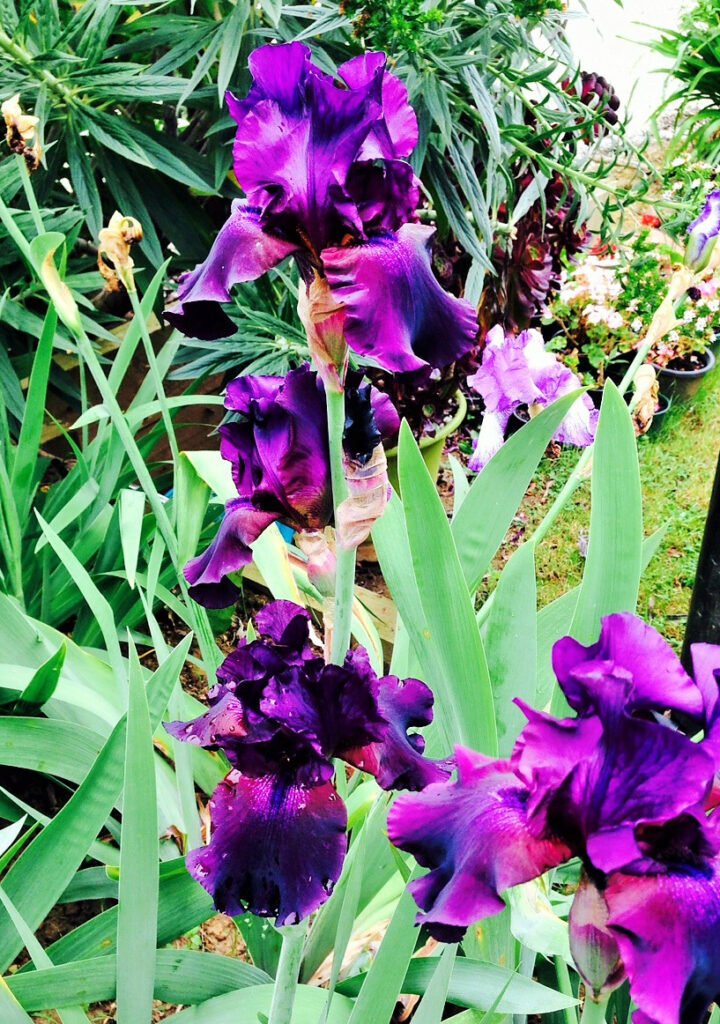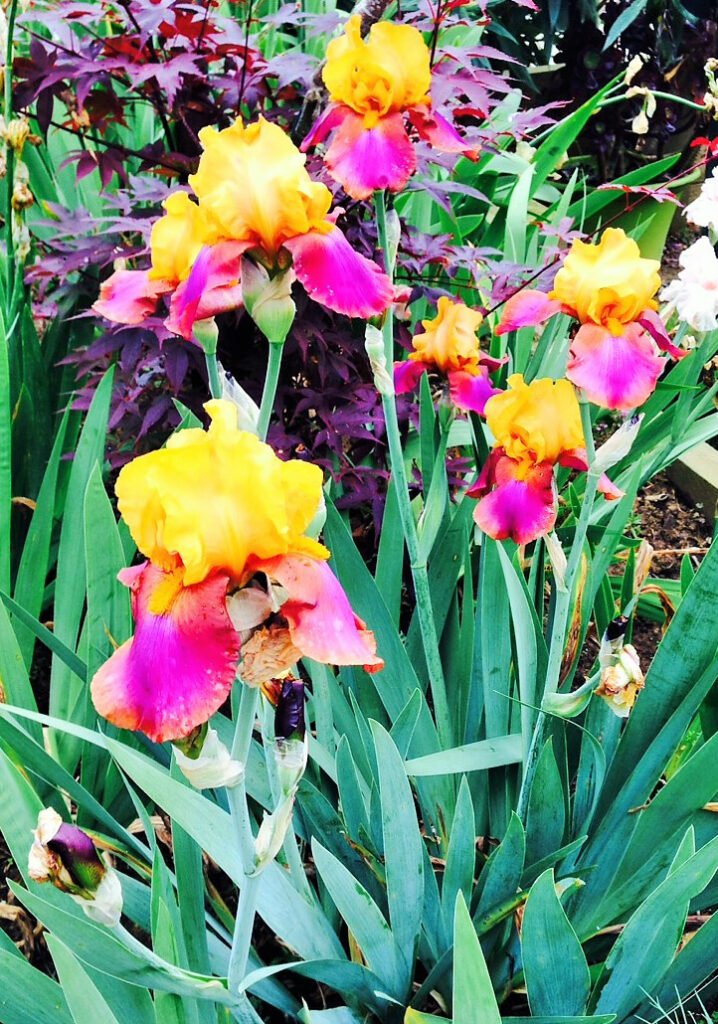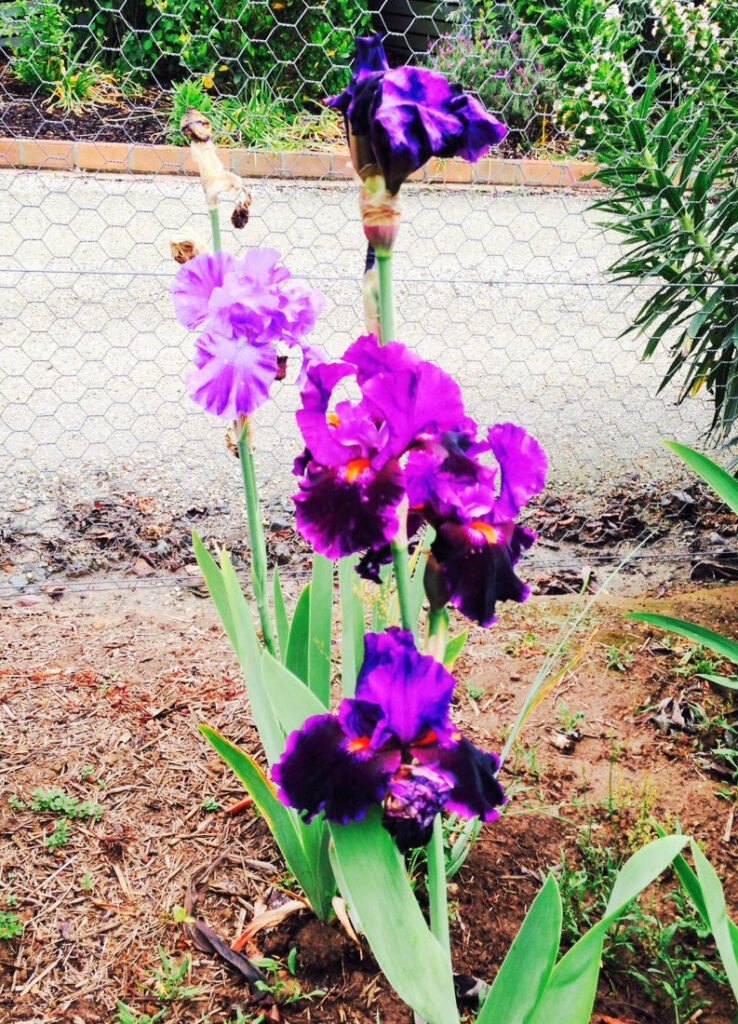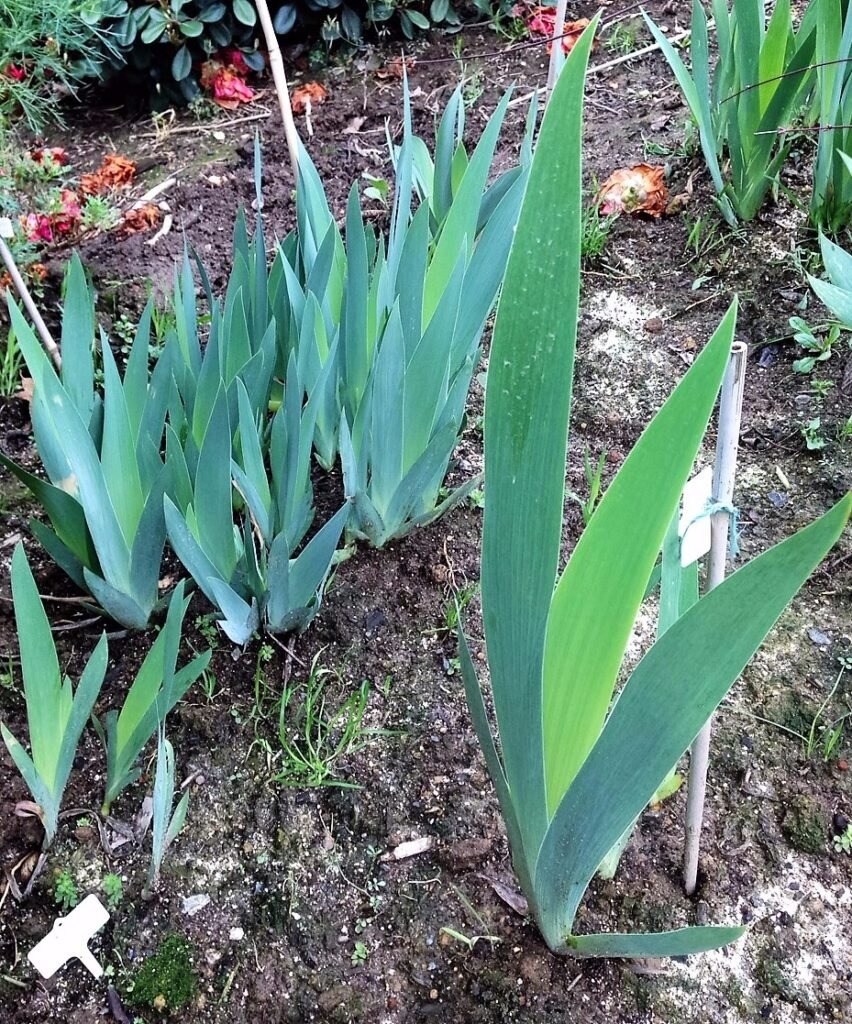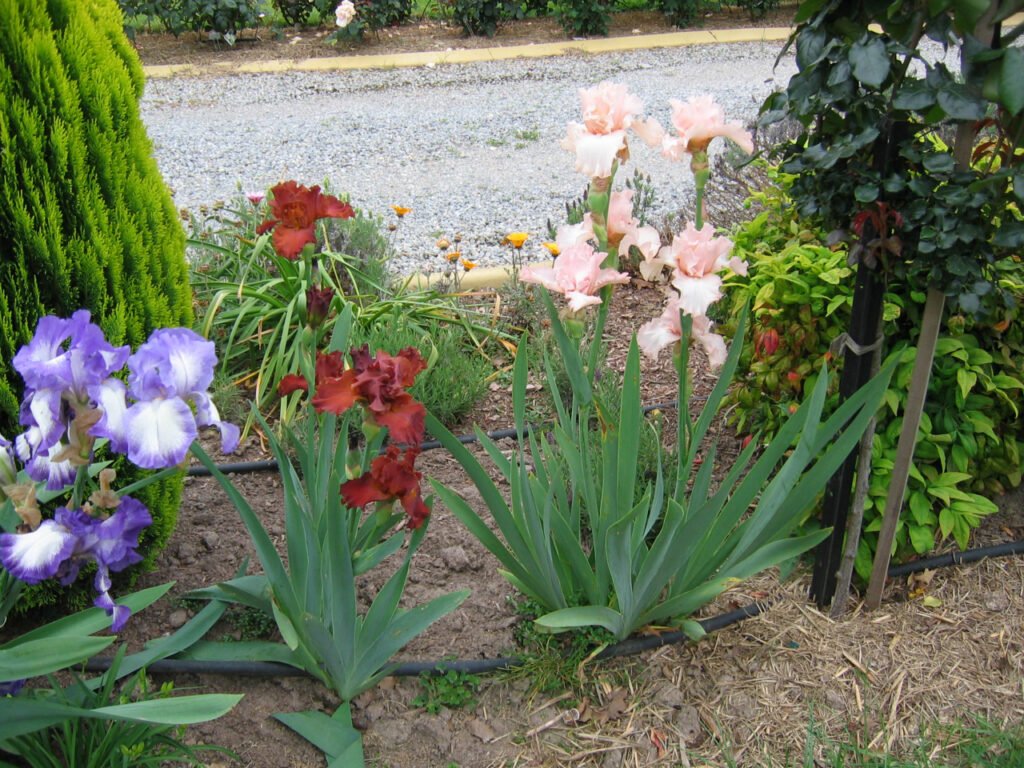General Comments on Irises
From December right through to March is a good time to subdivide Irises
If space is a problem and you want to build up the soil of your Iris bed, lift and divide your Iris and grow them in 30cm pots until after next flowering season. Use a good quality potting mix that drains well. Add Seamungus into the soil and a spoonful of slow release fertiliser or Seamungus under the plant, the fan of which should be placed in the centre of the pot to allow for the foliage to fill from the centre out. Place the pots in full sun so the plants get baked in the summer and chilled in the winter. Water the pots regularly but not to the point when they are wet and sodden.
Often the colour of container grown Iris is more intense particularly some of the darker Iris – Diabolique, Saturn, Copatonic, Rippling River, Here Comes the Night, and Crete. This year they were spectacular.
A great book for Iris lovers is – IRIS Flower of the Rainbow by Graeme Grosvenor. It contains everything you need to know about Iris from Tall Bearded to Evanasia plus pages of photos.
Here are are just a few tips about Iris which have been extracted from the Tempo Two season 2015-2016 Catalogue:
- Keep annuals and ground covers plants (including weeds) away from your Iris rhizomes as the shade they create will lessen or stop next years flowering. If covered over from some months, the rhizomes will rot away.
- Grow your Iris with roses. The fertilizer requirements are similar and spray used for black spot on the roses won’t harm the Iris.
- Bearded Iris do not need to be cut back each year. Only cut back when you are replanting them. The foliage is there to make flowers for the next year by photosynthesizing. If you remove it then flower quality may be reduced. Rather, pull away dead leaves and trim the tips if they have gone brown.
- Plant you Iris in the sunniest spot in the garden. Feed them in early Spring with a balanced fertilizer ( ‘Sudden Impact for Roses’ appears to be excellent for producing flowers, even in the first year after rhizomes have been split) and again in Autumn. Replant every two to three years, immediately after flowering for the best results.
